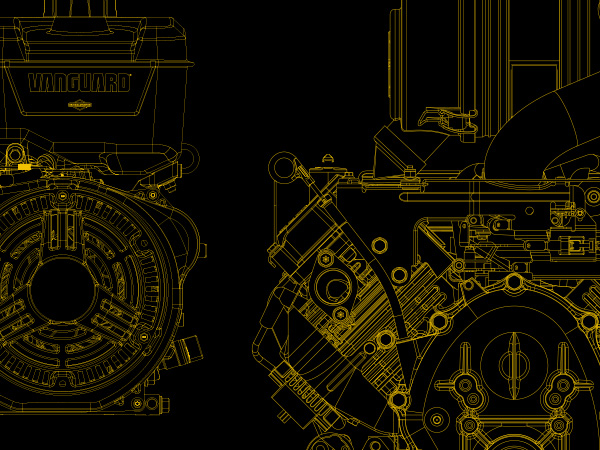Replacing The Ignition
.jpg)
Today's small engines contain a solid-state ignition armature mounted adjacent to the flywheel. The only moving parts in the system are the magnets mounted in the flywheel, which interact with the armature to produce electrical current. Most ignition armatures are designed to be replaced, not repaired, if they fail. A great source of information regarding ignition testing can be found on our Ignition System Theory and Testing FAQ.
Before you replace a suspect ignition armature, always test ignition with a spark tester (see Servicing Spark Plugs).
Installing And Adjusting A New Ignition Armature
An ignition armature must be set at a precise distance from the flywheel. Ask your Authorized Dealer or consult our Engine Check Chart for the proper gap for your engine. Common armature gap ranges are .006 - .010" and .010 - .014". Armatures are often packaged with a shim to assist in setting the gap. Microfiche or index cards of the proper thickness also work well.
- Remove the old ignition armature mounting screws. Then, disconnect the stop switch wire from the flywheel brake and remove the armature.
- Attach a replacement armature from the original engine manufacturer, using mounting screws. Then, push the armature away from the flywheel and tighten one screw.
- Turn the flywheel so the magnets are on the opposite side from the ignition armature.
- Place the appropriate shim between the rim of the flywheel and the ignition armature. While holding the shim, turn the flywheel until the magnets are directly adjacent to the armature.
- Loosen the tight screw so the magnets pull the ignition armature against the flywheel and shim. Then, tighten both mounting screws and rotate the flywheel until the shim slips free.
.jpg)
Testing A Stop Switch
- Insert the spark plug lead on one end of a spark tester and attach the tester's alligator clip to ground, such as an engine bolt.
- Place the equipment stop switch control in the OFF or STOP position. If the engine is not connected to the equipment, ground the stop switch wire to the cylinder. Attempt to start the engine using the rewind cord or key (if equipped), There should be no spark. If a spark appears, inspect the stop switch for damage. Consult your authorized service dealer if you find a faulty switch.
- Place the stop switch control in RUN or START position. If the engine is not connected to the equipment, make sure the stop switch wire is not grounded. Attempt to start the engine. A spark should be visible in the tester. If no spark appears, check for broken wires, shorts, grounds or a defective stop switch.
- Once you have confirmed that the stop switch is working, reconnect the spark plug lead
WARNING: Always read the engine and equipment manual(s) before starting, operating, or servicing your engine or equipment to avoid personal injury or property damage. Fuel and its vapors are extremely flammable and explosive. Always handle fuel with extreme care.
See an authorized dealer or contact Briggs & Stratton if you are unsure of any procedure or have additional questions. Find all Engine Safety Warnings.
MORE INFORMATION
Have more questions? Ask our new tool, Briggs & Stratton Assist for fast and accurate answers.
LOCATE A DEALER
Finding the right dealer is key to getting the right help. Our dealers are certified and specialize in selling or servicing our different product types.






